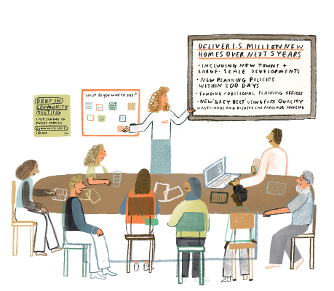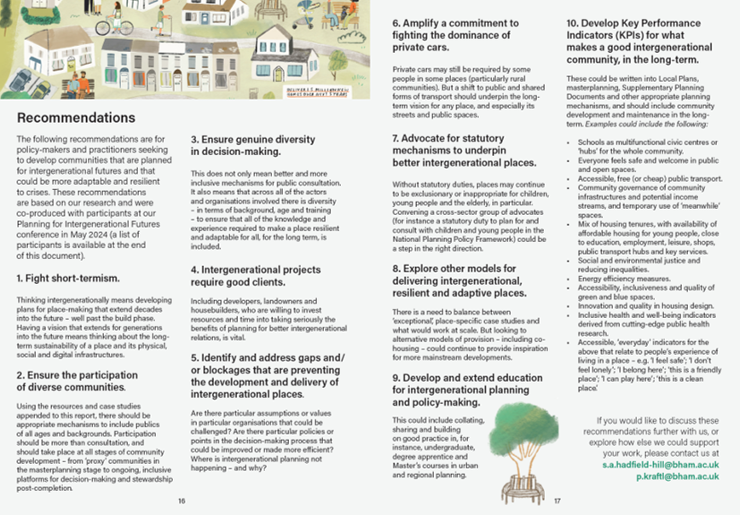

The recommendations can be found in our report but a copy is included below for ease. These are for policy-makers and practitioners seeking to develop communities that are planned for intergenerational futures and that could be more adaptable and resilient to crises. These are based on our research and co-designed with participants at our Planning for Intergenerational Futures conference in May 2024.

If you would like more detailed information, or support in implementing any of the recommendations, please contact:
Professor Peter Kraftl (P.Kraftl@bham.ac.uk)
Professor Sophie Hadfield-Hill (s.a.hadfield-hill@bham.ac.uk)
